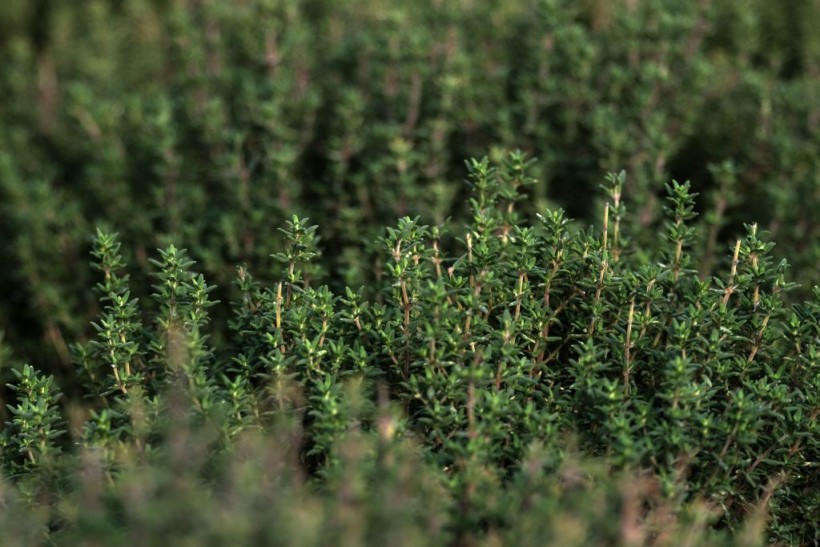Although thyme and oregano contain an anti-cancer substance that inhibits cancer progression, providing more to your tomato broth won't provide a substantial advantage.
The secret to releasing the leverage of these plant leaves is to boost the number of substances produced or to synthesize the chemical for new drugs.
Purdue Academic researchers took a step over to using the substance in pharmaceuticals by tracing its biogenesis, which is essentially a molecular formula of the additives and actions required.
Anti-Cancer Herbs, Thyme and Oregano
The observations challenge prior claims about the structure of this family of substances, known as phenolic or fragrant terpenes, that only several biogenesis routes in other crops have been revealed, she replied.
"These outcomes offer specific goals for designing high-value substances in various organisms," stated Pan Liao, a research fellow in Dudareva's lab and co-first author of the report.
Since this route has been identified, plant experts could be able to establish cultivars that yield significantly more of bioactive substances, or be integrated into microorganisms such as yeast for manufacturing.
"By recognizing how these components are created, we clear the door to design plants with elevated amounts of them or replicating the molecules in microorganisms for clinical need."
The group found the a whole biogenesis to thymohydroquinone, including structure of its catalysts thymol and carvacrol, as well as the short-lived transitional compounds.
According to Natalia Dudareva, Distinguished Lecturer of Biochemistry in Purdue's College of Agriculture and endeavor co-leader, the findings of this study will be beneficial for biochemistry and plant disciplines research on other flowering plants.
Thymol, carvacrol, and thymohydroquinone are taste substances found in thyme, oregano, and other Lamiaceae crops.
The crew used RNA genomic and correlation analysis to monitor over 80,000 genes from plant cell lines and identify the genes required for thymohydroquinone fabrication.
"These plants offer vital additives, but the portion is very limited, and exploitation will not be sufficient," said Natalia Dudareva.
Also read: Two Doses of Pfizer Vaccine 70% Effective Against Stubborn Omicron Variant
In-Depth Study Towards Anti-Cancer Herbs
Further mechanisms are being revealed as a result of the capacity to execute elevated gene regulation assessment using RNA sequencing, according to Dudareva.
"As experts, we are moving relative routes in various programs and plants," Dudareva explained.
Furthermore, the latter technique involves a fermentation procedure to acquire the important uses, as is the case with many plant-based merchandise.
The production process is so essential in the manufacture of prepared foods, pharmaceuticals, and biofuels that Purdue University presently provides a fermentation science field of study.
"Numerous plants also have therapeutic qualities, however the substances found inside them are used as dietary supplements, colognes, skincare, and other goods."
"The substituent created in the progression was not as anticipated," Liao explained.
Thymohydroquinone is shown to have anti-cancer attributes, which is why it is of major relevance.
"We discovered that the aromatic foundation from both thymol and carvacrol is formed from terpinene by a P450 monooxygenase in mixture with a dehydrogenase via two volatile circuits, but not p-cymene, as was suggested."
The report identifies the biogenesis predicated on what was recognized about the molecule framework and through metabolite stereotyping and biochemical diagnostics.
Also read: 'Acoustic Lighthouses' Making White Noise Could Save Millions of Birds
© 2024 NatureWorldNews.com All rights reserved. Do not reproduce without permission.


![Venomous Centipede Could be Game-Changer and Save Lives of People with Kidney Disease [Study]](https://1471793142.rsc.cdn77.org/data/thumbs/full/70407/280/157/50/40/venomous-centipede-could-be-game-changer-and-save-lives-of-people-with-kidney-disease-study.jpg)
![Plastic Pollution: Scientists Include Spores of Plastic-Eating Bacteria ‘Bacillus Subtilis’ to Develop 'Self-Digesting Plastic' [Study]](https://1471793142.rsc.cdn77.org/data/thumbs/full/70396/280/157/50/40/plastic-pollution-scientists-include-spores-of-plastic-eating-bacteria-bacillus-subtilis-to-develop-self-digesting-plastic-study.jpg)


